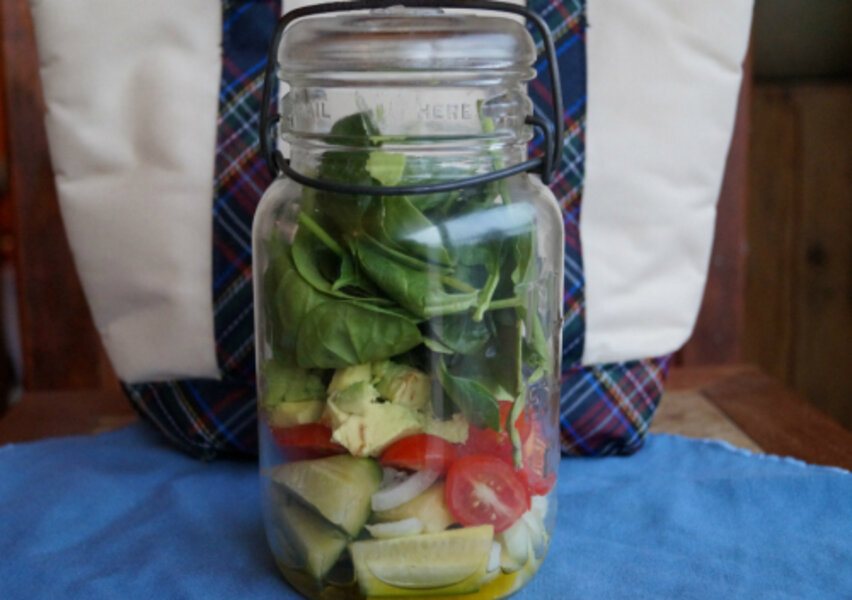Mason jar salads
Loading...
Admit it. You are eating a lot of pasta, potatoes, bread, and every possible kind of dessert these days. At least I am. It can seem like the best response to a winter that has dumped more than 100 inches of snow on Boston and put the general population in a really bad mood.
But overindulging in a lot of rich, starchy food won’t really make you feel better. And you’ll probably regret it once the weather warms up in just a few short weeks. My answer has been to pack a lot of mason jar salads and soup for lunch. If you are going to be a prisoner at your desk during lunch – either from too many deadlines or a refusal to walk outside – you might as well get your daily requirement of fiber and produce checked off. (Then you can go home and binge watch “The Great British Baking Show” while raiding the cupboard.)
Mason jar salads have been trendy for at least a year now, so I now I’m kind of late to be bringing this up. And my plan was to blog about them during the summer months when fresh, locally grown produce is in abundance at farmer’s markets. But here we are. It’s still winter. We survived three major winter storms back-to-back and I’m just not going to worry for the moment that my fresh peas were shipped in from Guatemala.
Julia Mirabella has written a handy cookbook for building these salads, simply called “Mason Jar Salads.” She has good ideas for smoothies, dips, and other easy lunches, too, plus a whole list of vinaigrette dressings that are easy to mix up.
Essentially, when you make a mason jar salad, you put the dressing in the bottom, and then build up with the heartiest produce going in first (onions, cucumbers, peppers), adding the greens, cheese, or nuts last. Then when you dump it out, viola! The dressing comes out last and the greens have stayed fresh during the transit.
I use an old Ball mason jar with a rusted hinge to keep the glass lid in place. (Tupperware tends to get oily from the dressing and leaks easily.) I feel very Little House on the Prairie when I unpack it at lunch, which helps to chase away the midday blues with a little bit of charm.
Making your own dressing is easy. It’s simply 2/3 oil to 1/3 vinegar or citrus juice. Add a pinch of salt and pepper, and whatever seasoning you prefer, give it a swirl and then start adding your veggies.
Try it. You’ll see you’ll start to perk up after lunch in just a few days.
Balsamic vinaigrette
From “Mason Jar Salads” by Julie Mirabella
1 tablespoon balsamic vinegar
1 teaspoon honey
pinch of salt
freshly ground black pepper, to taste
3 tablespoons olive oil (I use only 2, and that seems fine to me)
Related post on Kitchen Report: Corn and black bean salad








